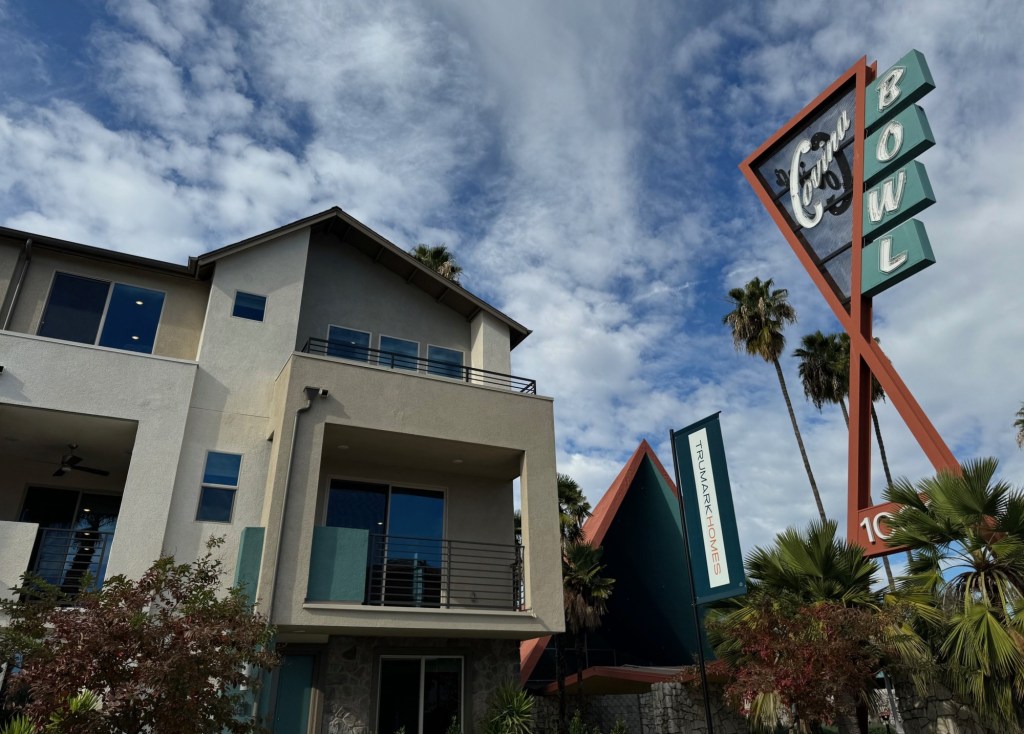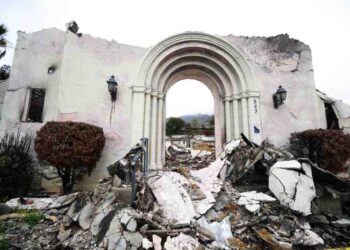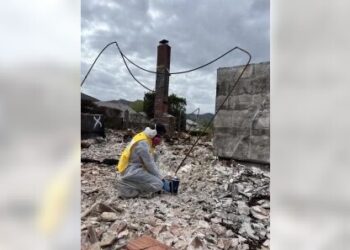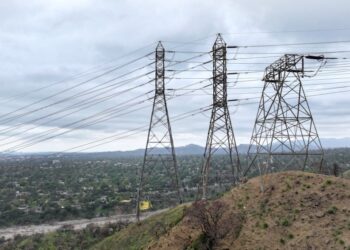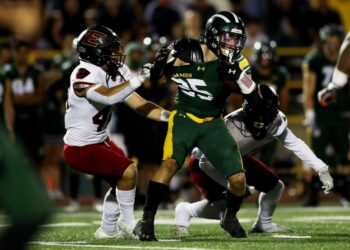Covina Bowl used to be an occasional haunt of your columnist/bowler. I had last visited the midcentury modern gem for a 60th anniversary party in 2016, where a cake was baked to resemble the building’s distinctive silhouette, and again in 2017, days before its 50 thunderous lanes went silent.
I was back earlier this month. This time, my bowling shoes stayed in my trunk.
With all of its lanes and pinsetting equipment ripped out, part of a deal to ensure no competition with a new bowling center in town, Covina Bowl is no more. Or is it?
Remarkably, the exterior looks much as it did when the bowling center was in operation, only refreshed.
The monumental triangular sign reading “Covina Bowl” still stands 60 feet tall. The walkway’s wavy-roofed canopy remains too. So does the dramatic, pyramid-shaped entry and the vaguely Mayan-style designs imprinted on the curving concrete-block wall.
But now it’s all part of a residential development.
Developer Trumark Homes bought the property in 2019 and is in the process of adding 132 residences to 10 acres. Trumark kept the main building and some major features.
“This is one of the most unique projects I’ve been in involved in in 20-plus years,” Eric Nelson, a vice president of Trumark Homes, told me.
We were talking in the parking lot along with Jennifer Mermilliod, the project’s Riverside-based historic consultant, near the freestanding sign. Roughly four stories in height, it’s almost as tall as the property’s signature palm trees.
“Not many signs are this big or this flamboyant,” Nelson remarked.
How do you retain a bowling center sign in front of a housing development — at least without changing the name to denote the development’s new name? Easy.
“The project,” Mermilliod pointed out, “is named Covina Bowl.”
Covina Bowl sure beats the usual placeless subdivision names. (Or my alternative bowling-related suggestion, Gutter Ball Estates.)
Some of the signage is in midcentury…
Read the full article here

